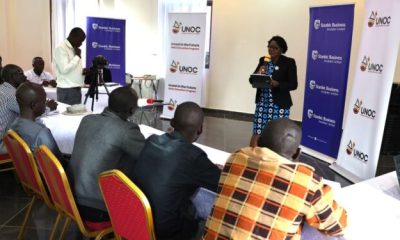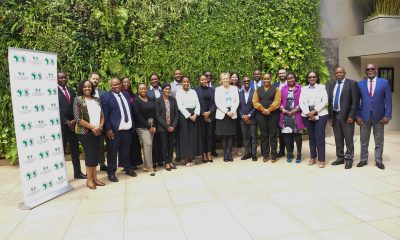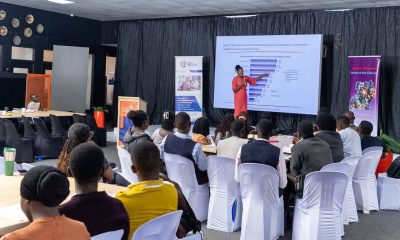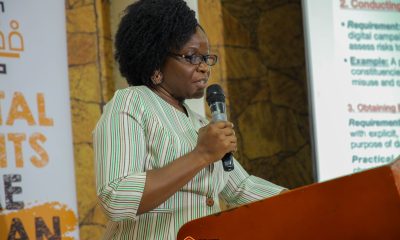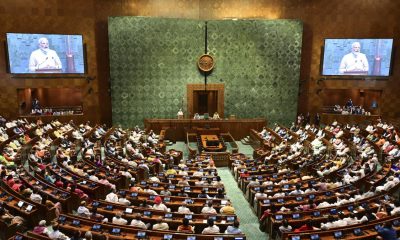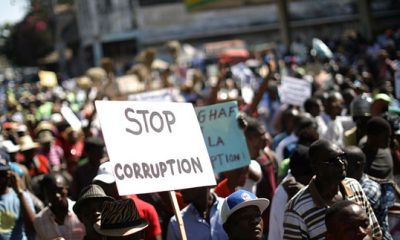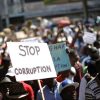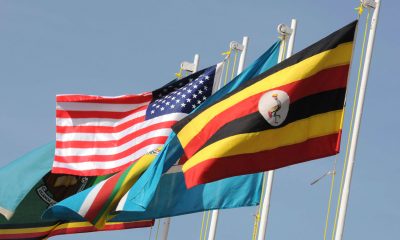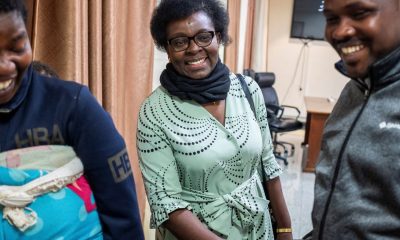Analysis
Can Museveni’s Ushs 1trillion pledge save Uganda’s agriculture?
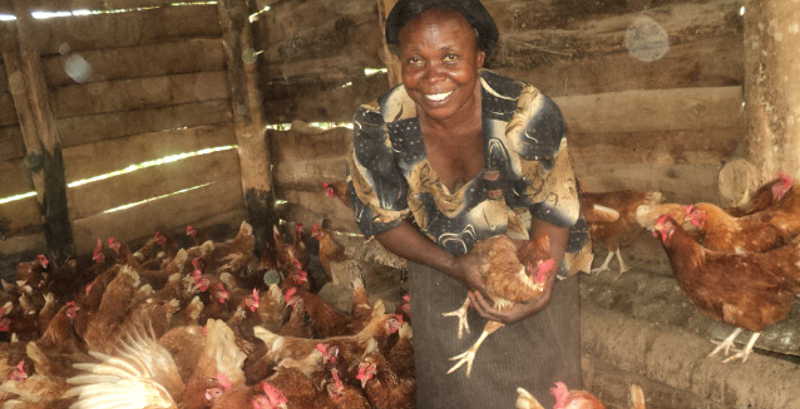
Mrs. Iga Kizzeyo is one of the struggling Ugandan farmers in Mityana district of Uganda. Will efforts by such smallholder farmers like her enable them to meet the growing demand for food in the current situation?
Uganda released its latest census figures recently revealing sobering challenges facing the world’s second youngest population.
Standing at 35m people in 2015, the latest figures show that Uganda is a country with immense potential but also facing enormous challenges. 55 percent of the population is still under 18 years while 77 percent are under 30.
These figures have have serious implications for Uganda such as the need for increased food production, investments into social services and the need to create meaningful jobs to meet the demands of the young and growing population now and in the years ahead.
President Yoweri Museveni praised the new figures, some of which show great improvements in human development indicators, as an achievement for his 30 year old rule. But he was acutely aware perhaps that his government’s long-stated goal of social economic transformation has largely failed. Uganda’s population has more than doubled since President Museveni came to power in 1986.
With 64 percent of the population still stuck in subsistence farming, a figure that has little changed over the last 30 years, according to the latest census results, remains a bitter pill to swallow for a government that set itself up for social economic transformation.
During the launch of the 2014 final census results in Kampala last week, Museveni referred to the heavy dependence on subsistence farming as ‘a big challenge that we have to reverse.’
Majority of Ugandans have not only gotten stuck into primitive agriculture, individual productivity has declined thanks in part to exhaustion of soil nutrients experienced through the years, predominance of low yielding varieties, increased crop pests and diseases, high post harvest losses, and the collapse of the extension worker system among other challenges.
Over the past 50 years since Uganda gained her independence, agricultural output has increased largely through clearance of more forests and wetlands than through increased productivity. As Ramathan Ggoobi and Hisali pointed out in their 2015 book on Crop and Livestock Production and Post-Harvest Losses in Uganda increased food production in Uganda has largely come from expansion of agricultural land from 45% of total arable land in the 1960s to 71% today.
Whereas other sectors of the economy such as services and manufacturing have recorded impressive growth rates of 8 and 7.5 percent respectively, agriculture has witnessed slowest growth of 1.7% despite the fact that it supports majority of the population through food, employment and as a source of foreign exchange from exports.
With rapid population growth of 3.2 percent witnessed during the last decade, Uganda’s subsistence agriculture finds itself unable to keep up with the pace of demand from the country’s bulging population. The result has been deepening poverty, increased malnutrition, higher food prices that mostly benefit crop buyers at the expense of poorly organised smallholder producers.
As revealed by the latest census figures, four million Ugandans representing 11.8 percent of the total population cannot afford two meals a day. But the latest Food Security report released this week by the Food and Agriculture Organisation (FAO) together with the Ministry of Health paints an even bleaker picture. 70 percent of Ugandans (23million) face some form of food insecurity ranging from mild to severe levels. The report blames low food production, diseases and pests, low incomes, inadequate food storage facilities and preference for traditional foods for the country’s food crisis.
Many experts blame the government’s ‘neglect’ of the agricultural sector for the persistent underperformance of the country’s most important sector, and the resultant high poverty levels. Critics have laughed at the average 3percent budgetary allocations to agriculture in recent years compared to above 10 percent for roads and energy sectors over the past couple of years as evidence of poor prioritisation.
And whereas government officials have in recent years rebuffed such accusations as untrue citing billions that are channelled through various government agencies for research and purchase of inputs, the president’s recent comments suggest a possible shift in thinking towards greater investment in the sector as a way to end the plight of majority of Ugandans.
In his speech during the launch of the final 2014 Census results in Kampala last week, President Museveni sounded repentant for agriculture’s poor performance. He pledged to triple funding for the sector in the next budget to about one trillion shillings (Approximately US$300m), putting it within the same range as the roads and energy sectors.
According to the president, who has just concluded a three months nation-wide tour of the country canvassing for votes and successfully got re-elected, what most peasants now need are seeds.
Museveni said: “Wherever I went I noticed that there is a lot of thirst to [engage in farming], but people do not have seedlings. This 200bn we had for NAADS, [National Agricultural Advisory Services], will be increased greatly and I hope I can raise one trillion shillings for agriculture.”
Museveni said: “What we want is that each household should at least have an acre of coffee or citrus or tea, so that there is a commercial enterprise. In places with limited land, we shall help them do onions, vegetables which can bring in some good money.”
But the president promised to channel the new monies through the existing NAADS, with support from Operation Wealth Creation, a new outfit comprising retired soldiers, to help in monitoring the distribution of inputs to farmers. Whereas the government introduced OWC to overcome NAADS soiled reputation especially in the distribution of farm inputs, the agency is still in charge of procurement and recently .
Whereas absence of reliable and affordable planting materials remains a major challenge for the millions of smallholder farmers across the country, many analysts have cautiously welcomed the president’s promise of additional funding.
A number of Ugandans see corruption and ‘politicisation’ or indeed the personalisation of government interventions through the Office of the President at the expense of building and strengthening national institutions as key obstacles to meaningful interventions targeting poor farmers.
Prof. Morris Ogenga Latigo, a farmer in Kalongo, Northern Uganda and also a former leader of Opposition in Parliament of Uganda, argues that by-passing institutions that have clear guidelines for programme development, implementation, monitoring and evaluation in favour of presidential initiatives have cost the country billions of money as much of the funds end up in non-priority areas or are mismanaged.
“You’ve seen what happened to the President’s Banana Initiative. It receives billions of tax payers’ shillings but what is there to show for it?” Latigo asked. He cited another fruit processing factory that was established in Arua with President Museveni’s support a few years ago, but has since unceremoniously closed.
Dr. Andrew Kiggundu, a senior researcher at the National Agricultural Research Laboratories (NARL) at Kawanda also raises fears that the proposed boost in funding for agriculture may fail to yield results because of what he describes as the collapse of national institutions responsible for designing and implementing priorities in agriculture.
“The problem is that we lost our national focus for agriculture. What happens now is that someone comes up with a project and the presents may say wow, how much money do you need?” says Kiggundu.
Kiggundu cites NAADS as a project that was designed by someone to help improve extension services in Uganda but was adopted as a national programme and has over the past couple of years attracted the lion’s share of the agricultural budget.
Kiggundu advocates for re-empowering of institutions that would restore the process of determining Uganda’s focus on agriculture.
“If we say that coffee, cocoa and cotton for example, are our priority crops for a given period of time, we would expect that all our focus as a nation is turned to those crops. And this means that if somebody comes walking with a project, we should be able to say sorry, we have our focus.”
Kiggundu adds that at the moment, Uganda needs to prioritise and support the production of a few high dollar value exports if the government is to succeed in getting majority of the people into gainful agriculture.
“I think emphasis should be put on crops that earn big in terms of foreign exchange. Crops such as coffee, cotton and cocoa, which are crops Ugandans have been growing for years. We now need to do it more intensively, using better varieties, apply fertilisers and improve marketing,” says Kiggundu.
Ramathan Ggoobi, a lecturer at Makerere University Business School (MUBS), calls for the creation of incentives for peasant farmers such as providing price guarantees, storage facilities and rural-based agro-processing industrial centres (RICs) to add value to crops as areas the government needs to support.
“The RICs will help to add value to farmers‘ produce, reduce waste (post-harvest losses), and hence reduce uncertainty in agriculture. It is these incentives that will prompt farmers to adopt new and modern technologies such as the high yielding varieties,” says Ggoobi.
But Kiggundu dismisses price guarantees are unrealistic in a liberalised global environment that Uganda is engaging in. “All internationally traded commodities are subject to price fluctuations. It is the job of governments to manage price fluctuations and this is the value of co-operatives.” says Kiggundu.
So, whereas the president’s promise to raise funding towards the sector that touches the lives of most Ugandans will likely be touted as a possible turning point for Uganda, it is evident that it will take more than money to fix what most experts agree is the most competitive sector.
What almost everyone seems to agree on is that meaningful change will come from sustained efforts to re-empower institutions in all fields of agriculture and that focus should be directed towards rescuing smallholder farmers from their current predicament.
Comments







